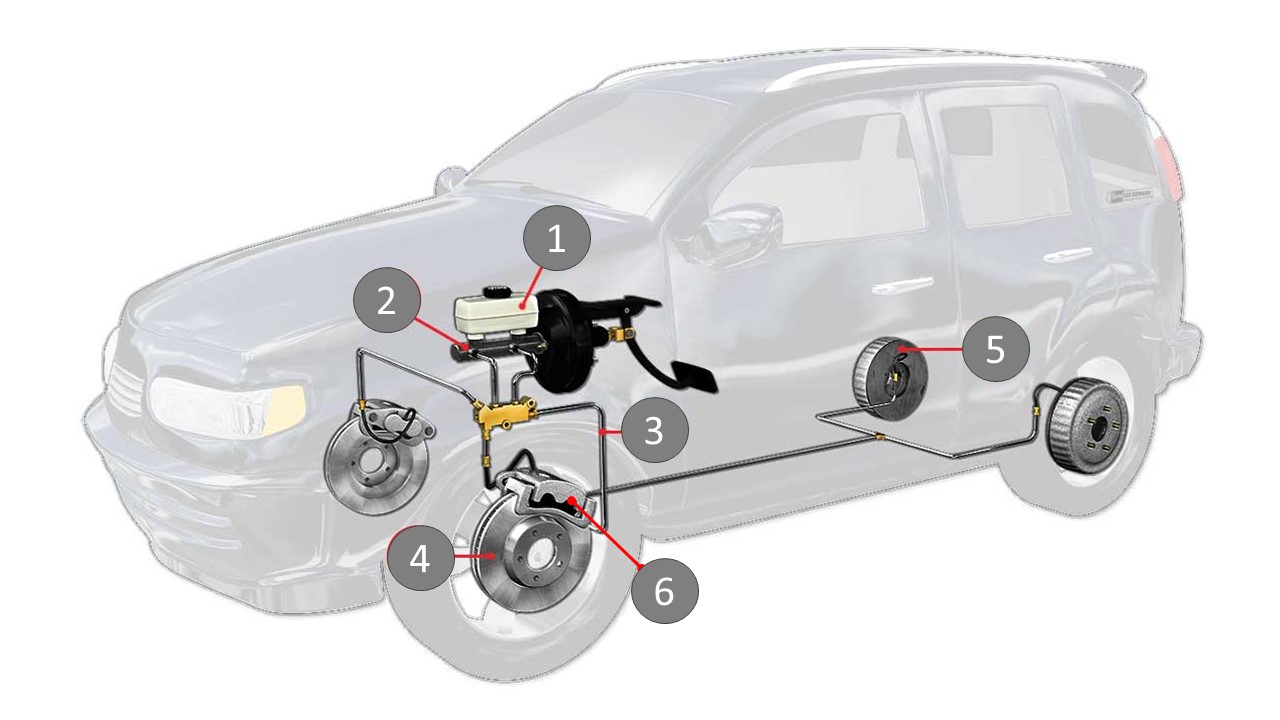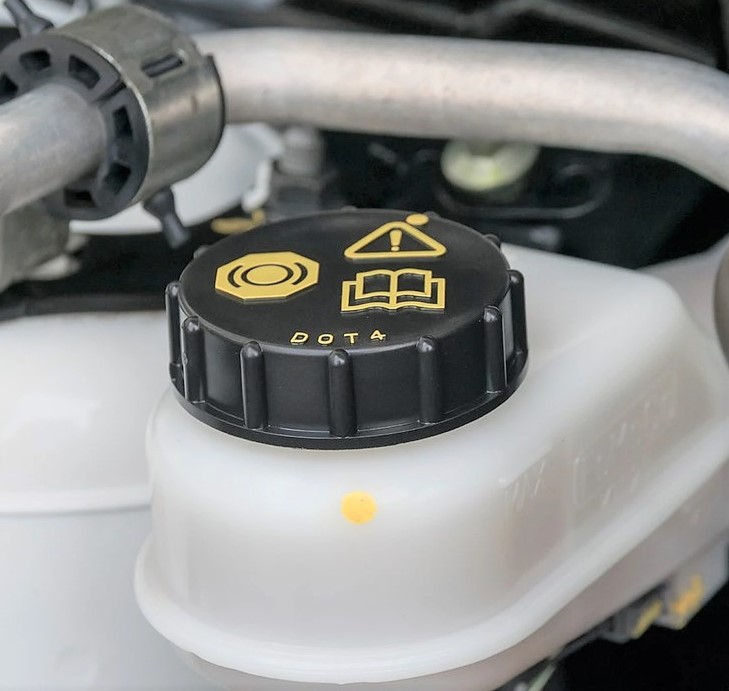Brakes
There are several different types of brakes on a vehicle. Each brake has its pros & cons but together they allow the car to be driven and stopped safely
- Handbrake
- Footbrake (Service brake)
- Disc brakes (Usually at the front)
- Drum brakes (Usually at the back)

- Brake reservoir (Braking fluid is poored into this container)
- Vacuum servo / Brake servo
- Brake lines / Duel circuit
- Disk brake
- Drum brake / Hand brake pulls on these brakes aswell
- Disk brake pads
Braking System
| Component | Summary |
|---|---|
| Hydraulic Fluid | The brake fluid that transmits the power from your foot to the brake pedal |
| Dual Circuit | The footbrake is separated into two distinct components in dual-circuit brake systems. If one of the circuits brake the other circuit continues to work |
| Vacuum Servo / Braking servo | Enhance the braking force The servo is powered by the engine Servo does not function when your car is being towed because the engine is not running |
| Drum brake | Found on older cars Usually on the back wheels |
| Disc brake | Has better braking capability Is replacing drum brakes |
Handbrake
The handbrake is a separate brake that is normally only used on the back wheels. A warning light illuminates to remind you to release the handbrake before driving. If you forget to put the handbrake down the car will be difficult to pull away when you start driving and you will notice the rear of the car usually goes down.
Using the handbrake
- There is a warning light that illuminates to remind you to release the handbrake before driving.
- When you park your car, make it a practice to shift into a low gear and use the handbrake. This is not just to keep the car stationary where you parked it, but also because if the handbrake is never used, it may begin to get stuck if you never use it.
- You should only leave the automobile in low gear in wet and chilly (Cold & humid) weather. You run the danger of the handbrake locking up if you don't!
- You can test the handbrake by trying to drive with the brake on. The car will be difficult to pull away when you start driving and you will notice the rear of the car usually goes down.
Footbrake (Service Brake)
The footbrake is the pedal under the steeringwheel. When you press on the pedal, fluid in the brake line is compressed. The brake fluid in the brake lines transmits the force of your foot on the brake pedal to the wheels.
Testing the Footbrake
You should regularly test the footbrake. Do the following push down hard on the pedal for 20 seconds and consider the items below:
Look for the following when testing the footbrake
- If the brake pedal slowly sinks to a very low position, this usually indicates wear or a leak .
- If the brake feels springy, It's possible that air in the braking system is causing the pedal to feel springy.
- Whilst driving and braking and the car pulls to the side it could indicate that one brake is stronger then the other one
Vacuum servo / braking servo
Many automobiles have power-assisted braking systems. i.e. a vacuum servo enhances it. This is sometimes referred to as the braking servo. Only when the engine is running does the servo work. Keep this inmind when being towed
Testing the Vacuum Servo
You can test if the brake/ brake servo is working properly
- By pressing the footbrake a few times until it gets stiff and
- then starting the engine with the footbrake still depressed
- You'll notice how the brake pedal goes down as soon as the engine starts.
Brake fluid
Brakefluid runs in the brakefluid lines throughout the car. Theses lines are under extreme pressure. When the braking system isn't totally tight (Sealed), brake fluid leaks out. If there is a leak in one of the lines. There is a reserve line that allows the brakes on some of the wheels to continue to work.

Check the brakefluid
- Change brake fluid every two years as it attracts moisture/water
- The brake fluid needs to reach the MAX level in the reservoir container
- Incorrect levels indicates there is a leakage
- Brakefluid is usually a clearliquid
